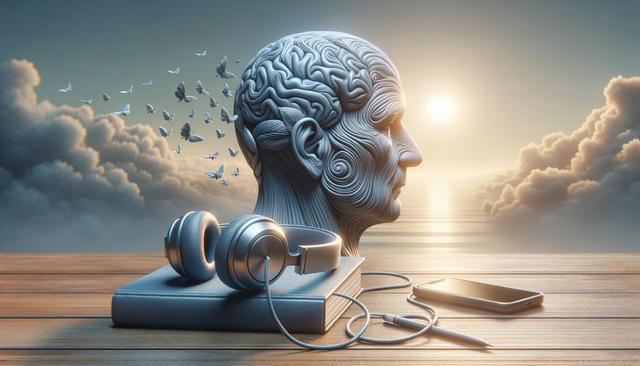Understanding Aphasia and Its Impact on Communication
Aphasia is a language disorder that can significantly affect a person’s ability to speak, understand, read, or write, typically resulting from a stroke or brain injury. While the severity and type of aphasia can vary, the common thread among those affected is the challenge of communicating effectively. Understanding how speech therapy helps improve communication is crucial for both individuals and caregivers. Speech-language pathologists work closely with patients to assess their specific needs and tailor exercises that target lost or weakened language skills. This process is not only about restoring speech but also about rebuilding confidence and reconnecting with others.
The journey to recovery often begins with a comprehensive evaluation to determine the severity and type of aphasia. From there, therapists can recommend personalized speech-language therapy options that might include naming exercises, sentence construction tasks, or alternative communication methods such as gestures or communication boards. The goal is to enhance functional communication, allowing individuals to express themselves in meaningful ways.
Top 3 Approaches to Aphasia Treatment for Language Recovery
Every person with aphasia has a unique experience, which is why treatment must be adapted to individual needs. Among the top 3 approaches to aphasia treatment for language recovery, the following methods are frequently recommended by professionals:
- Constraint-Induced Language Therapy (CILT): This technique limits the use of non-verbal communication, encouraging patients to rely solely on verbal language. It can be especially effective for those with moderate aphasia.
- Melodic Intonation Therapy (MIT): By using musical elements like melody and rhythm, this approach helps patients with non-fluent aphasia to improve verbal expression.
- Script Training: This involves practicing predictable dialogues or phrases that are commonly used in daily life, improving fluency and reducing anxiety during communication.
Specialized language rehabilitation programs often integrate these methods with digital tools and apps that provide additional practice outside of therapy sessions. These approaches not only support language recovery but also promote neuroplasticity—the brain’s ability to reorganize and form new connections.
What to Expect from Long-Term Treatment Plans
Aphasia recovery is typically not a quick process. Understanding what to expect from long-term treatment plans can help set realistic goals and foster a more positive outlook. Initially, therapy may be intensive, involving multiple sessions per week, especially in the first few months following injury. Over time, frequency may decrease as patients gain more independence in their communication abilities.
Long-term plans usually include:
- Regular reassessments to adjust therapy goals as progress is made
- Integration of family and caregivers into the therapy process
- Use of home-based practice exercises to reinforce skills learned in therapy
Neuro-recovery support services often play a vital role during this phase, offering resources such as group therapy sessions, educational workshops, and emotional support. These services help individuals maintain motivation and stay connected with others facing similar challenges.
Personalized Speech-Language Therapy Options
No two cases of aphasia are alike, which is why personalized speech-language therapy options are essential for effective treatment. Therapists often develop customized plans based on the type and severity of aphasia, the patient’s daily communication needs, and their personal goals. For example, someone who wants to return to work may focus on professional vocabulary and workplace interactions, while another individual might prioritize social conversations with family and friends.
Common elements of personalized therapy plans include:
- Use of multimedia tools, such as pictures, audio recordings, and videos, to enhance comprehension
- Incorporation of hobbies or interests to keep therapy engaging and relevant
- Real-world practice scenarios to build practical communication skills
These individualized approaches not only increase the effectiveness of therapy but also promote a sense of ownership and motivation in the recovery process. Many rehabilitation centers offer specialized language rehabilitation programs that emphasize personal involvement and goal-setting.
Support Systems and Resources for Ongoing Recovery
Recovering from aphasia extends beyond the therapy room. Building a supportive environment can significantly impact a person’s rehabilitation journey. Family members, caregivers, and friends play an essential role in encouraging communication and offering emotional reinforcement. For those navigating this path, neuro-recovery support services offer a wide range of tools and community-based programs that can make a meaningful difference.
These services may include:
- Support groups that provide a space for sharing experiences and coping strategies
- Educational resources for caregivers to better understand aphasia and assist in communication
- Technology-based solutions, such as communication apps and assistive devices
In many cases, continued involvement in these networks can sustain progress long after formal therapy ends. They provide a sense of belonging and help reduce the isolation that some individuals with aphasia may experience. Staying engaged with these resources ensures that communication gains are maintained and that individuals feel empowered throughout their recovery journey.
Conclusion: A Path Forward for Those Living with Aphasia
Finding your voice again after aphasia is a deeply personal experience that requires time, patience, and the right combination of treatments. Whether you’re exploring the top 3 approaches to aphasia treatment for language recovery or learning how speech therapy helps improve communication at home, the key is to stay committed and proactive. With personalized speech-language therapy options and specialized language rehabilitation programs, individuals can make meaningful progress. By understanding what to expect from long-term treatment plans and tapping into neuro-recovery support services, both patients and caregivers can navigate the path to recovery with confidence. The journey may be challenging, but with support and effective strategies, communication can be regained and lives can be transformed.




Leave a Reply